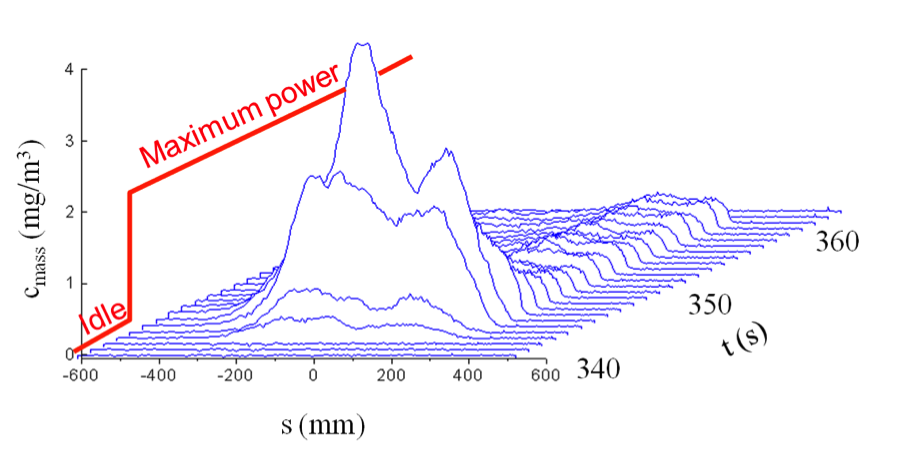Technologies
Laser Induced Incandescence for Soot Measurement
When monitoring the performance of jet engines, aerospace engineers typically are concerned with intake phenomena, such as how wind velocity, rain and shock waves affect the turbine at subsonic to supersonic speeds. But a growing awareness of the adverse health effects of air pollutants has led to a renewed interest in understanding what happens at the other end of the engine, at the exhaust. Tom Jenkins of MetroLaser Inc. in Laguna Hills, Calif., has devised a non-extractive measurement technique that uses laser-induced incandescence to obtain real-time images of soot concentration in engine exhausts and other flow fields.
Particulate matter emission in the form of soot is one of the most significant pollutants from commercial jet engines. It originates from the incomplete combustion of fuel and is particularly problematic during takeoff, which requires high fuel consumption. Researchers have measured these emissions using an extraction technique in which they sample the exhausts through filter paper and analyze the soot they capture under a microscope. However, this approach is prone to errors due to particles adhering to the walls of the extraction tube, and is unreliable for particles smaller than 20 nm, which can slip through the filter. Moreover, the results are not available immediately, and the method does not yield imaging information.

Figure 1 shows a setup implemented at a Sea Level Gas Turbine Facility at Arnold Engineering Development Complex in Tennessee. A 1064-nm beam from a pulsed Nd:YAG laser is launched across the exhaust plume of an engine under test. Soot particles in the exhaust are heated by the 600-mJ laser pulses to about 4000 K, which causes them to emit incandescent light. The exhaust temperature depends on the throttle conditions, varying from just above 300 K to approximately 1000 K, but this background temperature is sufficiently lower than the incandescence temperature to not interfere with the measurement. To collect the signal from the heated particulates, the researchers employed an intensified CCD camera. It features a controllable intensifier gating to offer a 1000 times increase in gain. Both the laser and the camera timing are controlled with digital pulse generators that enable a precise delay to be applied to the camera gate pulse with respect to the laser. The camera gate is synchronized with the 20-Hz pulse rate of the laser to improve the signal-to-noise ratio, typically opening approximately 10-ns after the 8-ns laser pulse and remaining open for 50-ns.
In ground tests conducted at AEDC, the instrument imaged a 1-m path through an exhaust plume with a spatial resolution of 5 cm with a temporal resolution of 0.1 s. Data from these tests indicate that the soot concentration jumped to 4 mg/m3 immediately after the throttle was increased to full power and remained high for several seconds before dropping back to a steady state of 0.3 mg/m3 (Figure 2).

